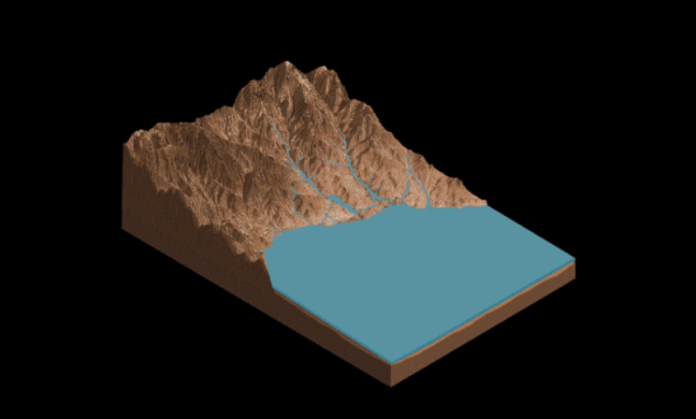Astronomers conducted a geochemical analysis of rock samples collected by the American Curiosity rover. The studied samples showed a high content of magnesium and calcium sulfates, the characteristics of which indicate the formation from solutions with a high salt content. These sedimentary rocks formed about 3.5 billion years ago when there was a salt lake at the bottom of Gale Crater.
Modern Mars is a stone desert, but in the past the situation was different. The most valuable data on this subject was received by the American Mars rover “Curiosity”, which landed on the Red Planet in 2012. It is located in the large Gale Crater, the study of rocks from the bottom of which has already allowed to prove the presence of temporary lakes in this depression.
In a new work by scientists from the United States and France, led by Ashwin Vasavada of the NASA Jet Propulsion Laboratory, an analysis of salts from the Sutton Island region on the slope of Mount Sharp, a central elevation in Gale Crater, is presented. Curiosity was located in this region in 2017. These compounds compose sedimentary rocks during the drying of lakes, which are widely used to determine atmospheric conditions, as well as the chemical composition of solutions both on Earth and on Mars.
Scientists studied samples of the Hesperian period in the history of the planet (3.3-3.7 billion years ago) and discovered clay lake-river sedimentary rocks with inclusions of various sulfates in the form of minerals. This mixing of substances indicates the crystallization of salts in a humid environment. Most likely, the minerals formed on the bottoms of dry shallow reservoirs, and the concentration of dissolved salts in the remaining water at the same time reached limit values.
The authors suggest that the climate of that time on Mars can be compared with the modern Altiplano region in South America. Here, streams of water flow from the tops of the mountains to a plateau with an arid climate, forming lakes resembling those existing in the Gail Crater. In the driest periods, some lakes completely evaporate, and in their place remains devoid of vegetation soil.
“As we climb Mount Sharpe, we see a change in landscape from wetter in the past to drier,” says Vasavada. – But this trend was not necessarily linear. Rather, it was erratic, including drier periods, as we see on Sutton Island, and they can be replaced by wetter ones, like clay-rich areas where Curiosity is now. ”
Via | The Journal Nature
